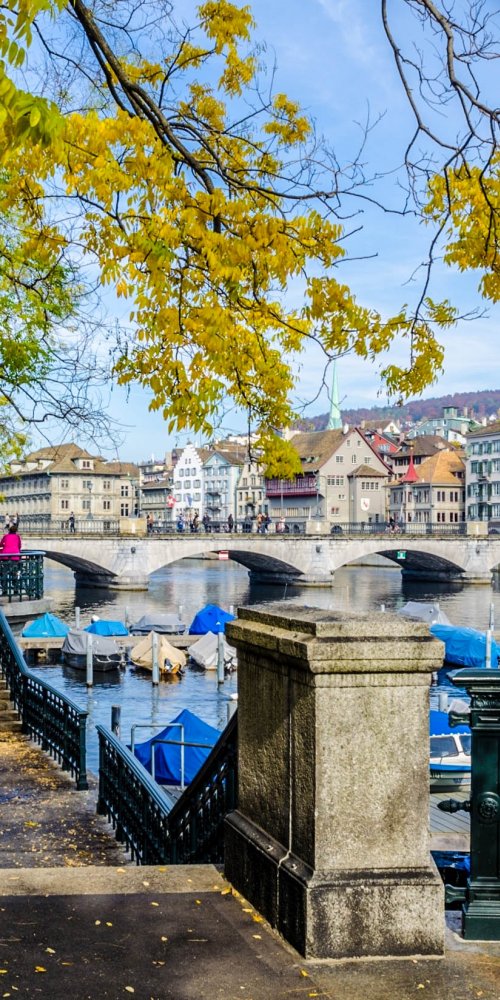

Step into the lively pulse of Zürich, CH, where the sharp beep of ticket barriers mingles with the cheerful chiming of trams gliding through narrow streets. The air buzzes with the hum of conversations in at least half a dozen languages, from spirited Swiss German to melodic Italian. As you stand on the platform, the sleek metro arrives silently, opening doors to a rush of commuters hurrying somewhere important. Outside, cyclists weave through cobblestone alleys, blending effortlessly with ancient architecture and modern cafés. The scent of fresh coffee fills the crisp air, while ferries lazily cut across Lake Zürich, reflecting the morning sun. Whether you’re a first-time visitor or returning traveller, mastering public transport in Zürich, CH will unveil a city full of surprises and easy connections.

Zürich is a city rich in charm and history but also modern efficiency. Relying on public transport here is not just practical, but also an experience in itself. For starters, owning a car in the city centre can be an expensive headache - parking fees alone can drain your wallet. When I first climbed the cathedral tower and looked down on cobbled alleys buzzing with trams, it struck me how smoothly the network linked all the spots I wanted to visit.
Using trams and buses, you’ll zip through the city snaking past iconic landmarks without worrying about traffic jams, all while keeping your carbon footprint low. Zürich's public transport is environmentally conscious, contributing significantly to the city’s clean air and green spaces. With most vehicles powered by electricity, every ride brings you closer to a sustainable way of exploring.
Moreover, public transport in Zürich, CH is impressively punctual and frequent - you rarely wait long. Whether rushing to a meeting, catching an evening theatre show, or sightseeing, you’ll find reliable connections round the clock. Compared to taxis, using trams and buses is also much more affordable, especially with the variety of tickets and passes available, which cater to occasional visitors and daily commuters alike.
| Mode | Lines | Peak Frequency | Night Service |
|---|---|---|---|
| Metro (S-Bahn) | 27 lines | Every 5-15 minutes | Limited weekend service |
| Tram | 15 lines | Every 3-8 minutes | Some lines on weekends |
| Bus | 74 lines | Every 7-20 minutes | Selected night routes |
| Ferry (Water Bus) | 5 lines on Lake Zürich | Every 30 minutes | No night service |
| Bike-Share | 300+ bikes | On demand | 24/7 availability |
These modes complement each other smartly. The metro S-Bahn swiftly connects outlying suburbs to the city, while trams and buses navigate the intricate city core. Ferries offer a leisurely scenic alternative, especially on sunny days. Together, they form a seamless web that ensures almost every part of Zürich is just minutes away. Knowing which mode lines to catch, and when, will make you feel like a local in no time.
Zürich’s public transport thrives during peak hours, typically from 07:00 to 09:00 and 16:30 to 18:30. Trams and metros are bursting with commuters heading to work or university. If you’re a light traveller, this can feel a bit hectic but also a great way to observe daily city life.
Off-peak hours, particularly mid-morning and early afternoons, offer a more relaxed commute. Seats are easier to find, and the quieter journey invites you to enjoy views of the river and cobbled streets through large tram windows. When I first rode tram line 4 at midday, I savoured the slow pace from the botanical gardens to the lively Niederdorf area without the crowds.
Note that some night services on weekends connect popular nightlife districts, but frequencies drop, so check schedules beforehand. Buses sometimes operate with fewer vehicles off-peak, so plan accordingly if you intend to explore late.
Pro tip: Day passes give you the flexibility to hop on trams or buses whenever you like, reducing the stress of timing. This is ideal if you want to linger at a café or muse over Zürich’s stunning architecture without rushing.

Most Zürcher trams and buses are accessible with low-floor entry and reserved spaces for wheelchairs. Metro stations generally have elevators, but it’s best to consult ZVV’s accessibility guide for specific stops. Staff are helpful if you require assistance boarding or disembarking.
Parents travelling with prams will find generous space on trams and buses. Strollers can be folded to free up room during busy times. Watch for priority seating marked with friendly icons.
The direct metro S-Bahn line S2 connects the airport to the city centre in around 10–15 minutes. When boarding with large luggage, prefer off-peak hours. Elevators and ramps are available at stations, though some historic tram stops do not have step-free access.
You can buy bus tickets directly from machines at stops, via the ZVV app on your smartphone, or from the bus driver in cash (exact change preferred). Contactless card payments are accepted on most routes (ZVV, March 2025).
Absolutely! The S-Bahn network is well signposted, has English information, and connects efficiently to major tourist sites and the airport. Tickets are integrated with tram and bus fares.
The 24h and 72h passes offer excellent unlimited travel across all zones needed for city exploration. The Zürich Card also includes museum entries and discounts, enhancing value.
Yes, tickets and passes cover trams, buses, metro, and ferries within the paid zones, allowing smooth interchanges without extra cost within the validity period.
After mastering public transport in Zürich, CH, you’re set to discover this charming Swiss city like a pro! Remember, it’s all about picking the right pass, knowing the zones, and embracing the punctual rhythm of trams and metros. Have you had any memorable rides or tips to share about getting around? Drop a comment below or sign up for our newsletter to get insider transit tips for your next city break.

Additional articles from our network with useful insights about Zürich.